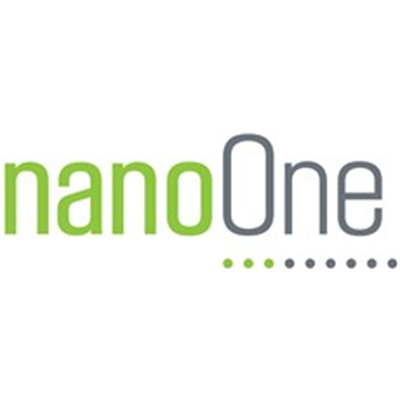Battery Metal Bulls: Riding the Mega-Trends of Decarbonization & Digitalization

Battery metals are poised for a supercycle driven by energy transition, AI, and emerging markets. Despite risks, structural demand and tight supply create opportunity.
- Battery metals like lithium, cobalt, nickel and copper are well-positioned to benefit from powerful long-term trends like the clean energy transition, artificial intelligence adoption, and emerging market growth.
- While policy uncertainty poses some near-term risks, the fundamental drivers of battery metal demand appear resilient.
- On the supply side, persistent deficits, geopolitical risks, and a lack of new mine development set the stage for potential shortages and price appreciation.
- Investors can gain exposure to the battery metals theme through futures, mining equities, ETFs, and private investments, while carefully weighing both sector-specific and broader macro risks.
The Bull Case for Investing in Battery Metals
The global shift towards electrification and clean energy is unleashing unprecedented demand for the critical materials needed to power the transition. Battery metals, including lithium, cobalt, nickel, and copper, are at the forefront of this transformational growth story. For investors seeking to capitalize on the long-term potential of decarbonization, the battery metals sector presents a compelling opportunity.
Decoupling from China
In recent years, a notable divergence has emerged between commodities tied to the conventional Chinese growth engine and those integral to the green energy revolution. As data illustrates, prices of critical minerals are outpacing their China-dependent counterparts. As Paul Wong and Jacob White stated in a Sprott report:
"Prices of commodities tied to critical materials in the energy transition are outperforming those tied to China's economic activity. The critical materials basket in the chart consists of equal weights of uranium, copper and silver. In contrast, the China-led basket represents equally weighted iron ore, metallurgical coal and oil."
This decoupling is being propelled by structural factors such as technological innovation, falling renewable energy costs, and an intensifying global response to climate change. These fundamental drivers are sparking sustained investment in wind, solar, and energy storage projects, translating into robust demand for key battery metals.
Policy Resilience
While the ascent of a Republican administration in the U.S. introduces some near-term uncertainty around renewable energy policy, the overall trajectory of the energy transition appears resilient. Even in a scenario where key tax incentives like the EV credit are fully repealed, substantial renewables growth is still anticipated:
"Current policy framework remains in place and where the IRA tax credits are completely repealed---suggests that a full-repeal scenario would result in a significant decline in solar, wind and energy storage deployments through 2030. However, even with these potential setbacks, BNEF still expects high growth rates in key renewable sectors."[3]
This policy resilience stems from the increasingly compelling economics of clean energy and the mounting urgency of climate action. State-level policies and corporate sustainability commitments are also expected to counterbalance potential federal headwinds. For battery metal demand, this implies that while growth may moderate, the overall direction remains decisively positive.
The AI Accelerant
The exponential rise of artificial intelligence is emerging as a powerful new driver of critical mineral demand. As data centers, advanced algorithms, and digital networks proliferate, so too does their immense hunger for energy. AI is expected to become an ever more important driver of energy demand. The power requirements of data centers, machine learning models and digital infrastructure are soaring as industries adopt increasingly complex AI systems.
This trend is exemplified by Microsoft's massive planned investments in AI-centric infrastructure. Microsoft recently announced plans to invest $80 billion to build out AI-enabled data centers. Such investments from leading tech firms should benefit critical materials in the coming years.[1]
The symbiotic relationship between AI and clean energy, with nuclear power emerging as a vital zero-emissions baseload source, adds another layer to the bullish battery metals story. As the digital transformation gains momentum, investors should anticipate an enduring tailwind for the sector.
The Emerging Market Engine
Rapid urbanization and industrialization across developing economies represent yet another long-term catalyst for battery metals. The resource-intensive nature of constructing modern cities and middle-class lifestyles in nations like India and Indonesia points to a structural uplift in critical mineral requirements:
"Urbanization and industrialization in emerging economies will be another pivotal theme in energy demand in 2025. These regions are rapidly building infrastructure, expanding manufacturing capabilities and improving living standards. Their growing energy needs will intensify the demand for electricity, transport and construction materials." [3]
This multi-decade process of emerging market growth, coinciding with accelerated uptake of electric vehicles and renewable power, creates a potent "demand shock" for battery metals.
Constrained Supply
On the supply side of the equation, battery metal markets are characterized by persistent deficits, elevated geopolitical risks, and a paucity of near-term mine additions:
The dearth of new supply is attributable to a range of factors, including long lead times for mine development, heightened scrutiny of the environmental and social impacts of mining, and a historic underinvestment in exploration and production capacity. This constrained supply picture, when set against the robust demand outlook, sets the stage for a potential "commodity supercycle".
Companies to Watch
Rome Resources
Rome Resources' recent drill results from its tin-copper project in the DRC are highly encouraging for the project's potential. The 30-40m wide tin intercepts align with the company's geological model and bode well for delineating a significant resource. Upcoming catalysts include resource estimates at the Mont Agoma and Kalayi prospects in early 2025. With ample funding from a recent financing, Rome is well-positioned to continue advancing its projects.
CEO Paul Barret noted, "Longer term, the signals are still very, very good. Shareholders understand that. If we come into production, it's going to be longer term, that's positive."
The long-term tin market fundamentals remain robust, and further drilling success could drive significant value for Rome Resources.
MTM Critical Metals
MTM Critical Metals is developing a potentially disruptive technology for the extraction of critical metals like gallium, germanium and indium. The company's patented Flash Joule Heating process enables faster, more selective recovery with a smaller environmental footprint compared to traditional methods. Commissioning of a 1 tonne/day pilot plant in 2025 presents a near-term path to demonstrating the technology's commercial viability, with initial production potentially meeting most of the US gallium demand. CEO Michael Walshe explains:
"The flexibility of the technology means that we can pivot as we need to to these other metals. Gallium, germanium we're very fortunate especially with the whole Trump administration and the geopolitical tensions with China, we think that the next four years in particular are going to be very favourable to what we're trying to do onshore back to the US."
Partnerships with Indium Corp and funding from the Department of Defense align MTM with strategic efforts to secure domestic critical mineral supply chains. MTM's agile technology and business model make it an attractive play on soaring demand for key metals that enable the clean energy transition.
Sovereign Metals
Sovereign Metals' recently completed optimized PFS for the Kasiya project in Malawi confirms its potential as the world's largest and lowest-cost natural rutile and graphite operation. The study projects robust economics with a US$2.3B NPV and US$16.4B in revenue over an initial 25-year mine life. Kasiya is set to produce 222kt of rutile and 233kt of graphite per year on average, establishing Sovereign as a major global supplier of these two critical minerals. The company has also made operational improvements to enhance the project's ESG credentials. With a strong cash position and technical support from strategic investor Rio Tinto, Sovereign is well-funded to advance Kasiya towards production and meet surging demand from aerospace, EV battery, and green technology applications.
Canada Nickel
Canada Nickel released positive regional exploration results, headlined by its best intercept to date at the Midlothian property of 470m at 0.31% Ni. The Bannockburn and Deloro projects also yielded encouraging results that should support sizable resource updates. Additionally, drilling resumed at the Crawford-adjacent Nesbitt target, which could provide an important source of early ore. Canada Nickel plans to publish a total of eight regional resource estimates by mid-2025, highlighting the district-scale potential of its Timmins nickel sulphide projects. These exploration successes, combined with the Crawford project's development and Canada Nickel's "NetZero Nickel" branding, position the company to be a major supplier of responsibly-sourced nickel for the EV battery revolution.
Nano One Materials
Nano One Materials made significant strides in 2024, ramping up production of its low-cost, eco-friendly LFP cathode materials to capitalize on booming demand from the EV and energy storage sectors. The company's patented One-Pot manufacturing process enables 30% cost savings and 80% reductions in energy and water usage compared to incumbent methods. Nano One secured approximately $40 million in non-dilutive government funding in 2024 to support the expansion of its LFP production capacity. The company also launched a key partnership with engineering firm Worley to accelerate the deployment of Nano One's cathode technology through licensing and modular plant designs. With near-term revenue pathways from cathode production and process licensing, Nano One is well-positioned for growth in the rapidly expanding LFP battery materials space.
The Investment Thesis for Battery Metals
For investors, the battery metals sector offers several compelling features:
- Exposure to the mega-trend of decarbonization and electrification
- Leverage to the transformational growth of artificial intelligence
- Participation in the long-term development of emerging markets
- Diversification benefits relative to conventional industrial commodities
- Potential for a prolonged period of price appreciation amid structural deficits
The battery metals sector sits at the intersection of three powerful trends reshaping the global economy: the energy transition, the AI revolution, and emerging market urbanization. Despite near-term policy uncertainties, the fundamental case for investing in critical minerals remains robust, underpinned by structural demand growth and constrained supply.As the world navigates the challenges and opportunities of decarbonization, investors should consider allocating capital to this dynamic sector. While risks must be carefully managed, the potential rewards of participating in a once-in-a-generation transformation are substantial. In the contest to power a cleaner, smarter, more affluent world, battery metals may prove to be the ultimate winners.
References:
- Reuters (January 2025). Microsoft Plans to Invest $80 Billion on AI-Enabled Data Centers in Fiscal 2025
- Radebe, Nomkhosi and Chipangamate, Nelson (March 2024). ScienceDirect. Mining Industry Risks, and Future Critical Minerals and Metals Supply Chain Resilience in Emerging Markets
- Wong, Paul and White, Jacob (January 2025). Sprott. Top 10 Themes for 2025
- Caldwell, Preston (January 2025). MorningStar Economic Insights. What Trump’s Tariffs Would Mean for the US Economy
Analyst's Notes




Subscribe to Our Channel
Stay Informed





























